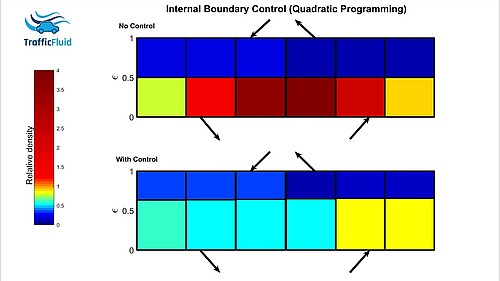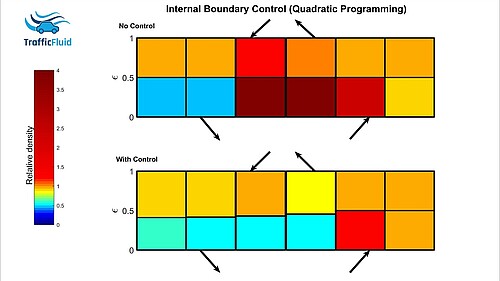Video Playlist 2: Quadratic Programming (QP) for optimal internal boundary control of lane-free automated vehicle traffic
The videos included in this playlist are part of the results discussed in the paper titled "Optimal internal boundary control of lane-free automated vehicle traffic". Lane-free traffic implies that incremental road widening (narrowing) leads to corresponding incremental increase (decrease) of capacity; and this opens the way for consideration of real-time internal boundary control on highways and arterials, in order to flexibly share the total (both directions) road width and capacity among the two directions in dependence of the bi-directional demand and traffic conditions, so as to maximize the total (two directions) flow efficiency. The problem is formulated as a convex Quadratic Programming (QP) problem and corresponding results are presented in the videos. The videos present a hypothetical highway (two directions) with 6 segments (cells) and indicated on-ramps and off-ramps. The colours in each cell and direction refer to the corresponding values of relative densities, as they evolve for respective external demand scenarios described in the above article. Note that relative-density values higher than 1 indicate congested traffic. The upper figure in each video reflects the no-control (fixed-boundary) case; while the lower figure reflects the internal boundary control case.
The uncongested case
This video displays results of an external demand scenario, for which congestion appearing in the no-control case can be utterly avoided by internal boundary control.

The congested case
This video displays results of an external demand scenario, for which congestion appearing in the no-control case can be strongly mitigated but cannot be utterly avoided by internal boundary control; see https://doi.org/10.1016/j.trc.2021.103060 for insights and reasons.

